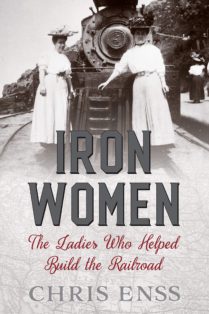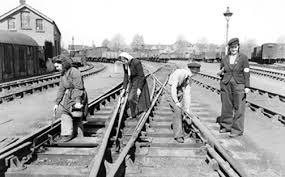Enter now to win a copy of
Iron Women: The Ladies Who Helped Build the Railroads

When the last spike was hammered into the steel track of the Transcontinental Railroad on May 10, 1869, at Promontory Summit, Utah, Western Union lines sounded the glorious news of the railroad’s completion. At 2:45 p.m. on that day, the following dispatch was received at New York.[i]
“Promontory Summit, Utah, May 10 – The last rail is laid! The last spike is driven! The Pacific Railroad is complete! The point of junction is 1086 miles west of the Missouri River, and 690 miles east of Sacramento City.”[ii]
For more than five years, an estimated four thousand men, mostly Irish working west from Omaha and Chinese working east from Sacramento, moved like a vast assembly line toward the end of the track.[iii] Editorials in newspapers and magazines from coast to coast praised the accomplishment, and some boasted that the work “was begun, carried on, and completed solely by men.” The August 1869 edition of Godey’s Lady’s Book and Magazine reported, “No woman has laid a rail; no woman has made a survey.” The article added that “the muscular force and the intellectual guidance have come alike from men. It is worthwhile for the women who are clamoring for the suffrage to reflect whether the right to vote does not imply a capacity for the hard work of subduing the world, mental and physical, to which so far only men have been found competent.[iv]
“We have indicated again and again in this publication what we believe to be the true sphere of woman: in the home, in society, among the poor; refining and ennobling social intercourse; alleviating the misery of the world. She can do these things now; if she contests man’s work with him, she can do them no longer. Not by her hand can build the city…or the railroad.”[v]
Although the physical task of building the railroad had been achieved by men, women made significant and lasting contributions to the historic operation. The female connection with railroading dates as far back as 1838, when women were hired as registered nurses/stewardesses in passenger cars. Those ladies attended to the medical needs of travelers and acted as hostesses of sorts, helping passengers have a comfortable journey.


